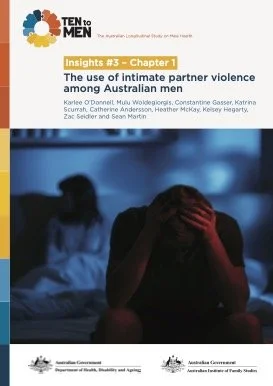The use of intimate partner violence among Australian men
By Karlee O’Donnell, Mulu Woldegiorgis, Constantine Gasser, Katrina Scurrah, Catherine Andersson, Heather McKay, Kelsey Hegarty, Zac Seidler
This research explores the use of intimate partner violence among Australian men, including factors that may reduce the likelihood of such behaviours. A public health approach is taken that considers the power of improving men’s health and wellbeing in relation to preventing intimate partner violence. The report is accompanied by supplementary material.
Programs that support men to develop good quality relationships with their children and partners based on mutual respect and affection – as well as initiatives that encourage men to develop strong social connections and seek support – could contribute to a reduction in use of intimate partner violence.
Key messages
In the nationwide survey, around 1 in 3 men (35%) reported they had ever used a form of intimate partner violence, as an adult, by 2022; this is up from 24% who had ever reported use by 2013-14.
Emotional-type abuse was the most common form of intimate partner violence, with 32% of men in 2022 reporting they ever made an intimate partner feel ‘frightened or anxious’.
Men with moderate or severe depressive symptoms were 62% more likely to use intimate partner violence by 2022, compared to men without these symptoms.
By 2022, 25% of men reported ever using and experiencing intimate partner violence, more than twice the proportion who reported using violence but never experiencing it (10%).
High levels of social support and high levels of paternal affection both reduced the likelihood of men using intimate partner violence.
Melbourne: Australian Institute of Family Studies, 2025. 21p..


